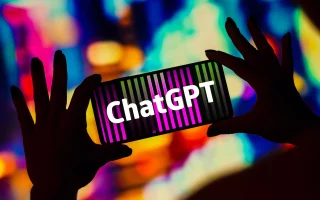As a large language model trained by OpenAI, ChatGPT has the ability to generate human-like responses to a wide range of prompts.
However, the quality of the responses largely depends on the quality of the prompts provided.
In this blog post, we will explore some techniques for crafting effective prompts in ChatGPT to generate more meaningful and engaging responses.
1. Be Clear and Specific.
When crafting prompts for ChatGPT, it’s important to be clear and specific about what kind of response is expected. This means that the prompt should clearly communicate the topic or subject of the response. For example, if you want ChatGPT to generate a short story, the prompt should explicitly state that.
Similarly, if you want ChatGPT to answer a specific question, the prompt should mention the question explicitly.
Being clear and specific helps ChatGPT to understand the context better and generate more accurate and relevant responses. Without clear instructions, ChatGPT may not be able to generate the kind of response that you are looking for.
This can lead to responses that are irrelevant, inaccurate, or completely off-topic.
Clear and specific prompts also save a lot of time and effort in refining the response later on. If the prompt is unclear or ambiguous, you may need to spend additional time refining the response or providing additional information to ChatGPT. This can be a time-consuming process and may result in less efficient conversations.
To create clear and specific prompts, you can use simple and direct language. Avoid using complex sentences or technical jargon that may be difficult for ChatGPT to understand. Instead, use simple and concise language that conveys the message clearly.
You can also break down the prompt into smaller, more specific components. For example, if you want ChatGPT to generate a short story, you can provide specific instructions such as the genre, the characters, the setting, and the plot. This will allow ChatGPT to generate a more detailed and accurate response that meets your specific requirements.
2. Provide Context.
Providing context is a crucial technique for crafting effective prompts in ChatGPT. Context refers to the information surrounding the topic or subject of the prompt. It can include information about the characters, setting, situation, or any other relevant details that can help ChatGPT to understand the conversation better.
Context is important because it helps ChatGPT to generate more accurate and relevant responses. Without context, ChatGPT may not be able to understand the situation and generate a response that is appropriate. For example, if the prompt is “What’s your favourite movie?” and there is no context provided, ChatGPT may not know what kind of movies to focus on or what specific criteria to use in determining a favourite.
Providing context can also make the conversation more engaging and meaningful. By providing additional details about the topic, you can make the conversation more interesting and relevant to the user. This can lead to a more engaging conversation that is more likely to hold the user’s attention.
There are different ways to provide context in prompts. You can provide a brief description of the topic or subject, provide a set of keywords, or even provide a sample conversation. The key is to provide enough information so that ChatGPT can understand the situation and generate an accurate and relevant response.
For example, if you want ChatGPT to generate a conversation between two people, you can provide information about who these people are, what they are talking about, and why they are having this conversation.
You can also provide information about their relationship, their personalities, and their goals. This provides ChatGPT with enough context to generate a more accurate and relevant response.
3. Use Open-Ended Questions.
Using open-ended questions is another important technique for crafting effective prompts in ChatGPT. Open-ended questions are questions that require more than just a yes or no answer. They encourage the user to provide more information, share their thoughts and opinions, and engage in a more meaningful conversation.
Open-ended questions are effective because they allow ChatGPT to generate more creative and varied responses. They also encourage the user to think more deeply about the topic and provide more detailed and interesting answers. This can lead to a more engaging conversation and a more satisfying user experience.
Examples of open-ended questions that can be used in ChatGPT include:
- What do you think about [topic]?
- Can you tell me more about [topic]?
- How do you feel about [topic]?
- What are your thoughts on [topic]?
- What do you think might happen if [scenario]?
These questions encourage the user to provide more information and engage in a more meaningful conversation. They can also be used to explore different perspectives and ideas, leading to a more interesting and engaging conversation.
It’s important to note that open-ended questions should be used in moderation. Too many open-ended questions can make the conversation feel unstructured and unfocused, and can lead to a less satisfying user experience.
It’s important to balance open-ended questions with more specific and focused prompts to create a well-rounded conversation.
4. Avoid Ambiguity.
Avoiding ambiguity is a crucial technique for crafting effective prompts in ChatGPT. Ambiguity refers to situations where a word, phrase, or sentence can have multiple meanings or interpretations. In the context of chatbots, ambiguity can lead to confusion, miscommunication, and inaccurate responses.
Avoiding ambiguity is important because it helps ChatGPT to generate more accurate and relevant responses. It ensures that the user’s intent is understood and that the conversation stays on track. Ambiguity can arise from a variety of sources, including unclear language, multiple interpretations, and implicit assumptions.
To avoid ambiguity in prompts, it’s important to use clear and specific language. This means avoiding vague or general terms and being as specific as possible. For example, instead of using a general term like “food,” you could use a more specific term like “Italian cuisine” or “vegetarian dishes.” This helps to eliminate ambiguity and ensures that ChatGPT understands what the user is asking for.
Another way to avoid ambiguity is to use explicit language instead of implicit assumptions. This means being clear about what you mean and avoiding assumptions about the user’s knowledge or understanding.
For example, instead of assuming that the user knows what a specific acronym means, you could provide an explanation or definition to ensure that the user understands.
It’s also important to avoid using multiple interpretations or meanings for a single word or phrase. This can be especially important when dealing with homophones or other words that sound similar but have different meanings. In these cases, it’s important to use context and additional information to disambiguate the meaning.
5. Use Humour and Emotion.
Using humour and emotion can be a powerful technique for crafting effective prompts in ChatGPT. By using humour and emotion, you can create a more engaging and memorable user experience. This can lead to a stronger connection with the user and a more positive overall impression of the chatbot.
Humour can be used in prompts to create a more lighthearted and playful tone. This can be especially effective when dealing with topics that might otherwise be dry or boring.
For example, instead of asking a straightforward question like “What is your favourite colour?” you could add a bit of humour and ask “If you were a crayon, what colour would you be?” This can make the conversation more fun and engaging, and can encourage the user to open up and share more information.
Emotion can also be used in prompts to create a more personal and empathetic connection with the user. This can be especially effective when dealing with sensitive topics or when the user is looking for emotional support.
For example, instead of asking a straightforward question like “What is your favourite movie?” you could ask “What movie always makes you feel better when you’re having a bad day?” This can help to create a more empathetic and supportive tone, and can make the user feel more comfortable sharing their thoughts and feelings.
It’s important to use humour and emotion in a way that is appropriate and respectful to the user. This means being aware of the user’s mood and emotional state, and avoiding topics or language that might be triggering or offensive.
It’s also important to balance humour and emotion with more focused and specific prompts to ensure that the conversation stays on track and relevant to the user’s needs.
Conclusion.
Crafting effective prompts in ChatGPT is crucial for generating more meaningful and engaging responses. By being clear and specific, providing context, using open-ended questions, avoiding ambiguity, and using humour and emotion, you can create prompts that are more engaging, accurate, and relevant.
With these techniques in mind, you can make the most out of ChatGPT and generate more human-like and engaging conversations.




